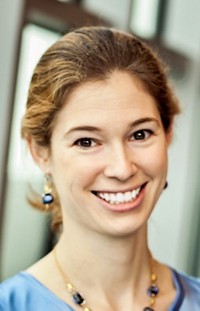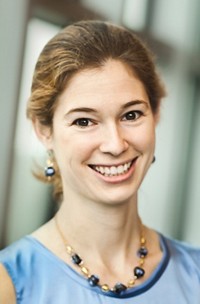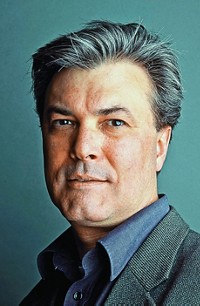Advertisement
Grab your lab coat. Let's get started
Welcome!
Welcome!
Create an account below to get 6 C&EN articles per month, receive newsletters and more - all free.
It seems this is your first time logging in online. Please enter the following information to continue.
As an ACS member you automatically get access to this site. All we need is few more details to create your reading experience.
Not you? Sign in with a different account.
Not you? Sign in with a different account.
ERROR 1
ERROR 1
ERROR 2
ERROR 2
ERROR 2
ERROR 2
ERROR 2
Password and Confirm password must match.
If you have an ACS member number, please enter it here so we can link this account to your membership. (optional)
ERROR 2
ACS values your privacy. By submitting your information, you are gaining access to C&EN and subscribing to our weekly newsletter. We use the information you provide to make your reading experience better, and we will never sell your data to third party members.
Synthesis
Arthur C. Cope Scholar Awards
by PAT SHORT
February 25, 2008
| A version of this story appeared in
Volume 86, Issue 8
"A superb and exciting lecturer," Melanie S. Sanford, 32, is a much-sought-after speaker for conferences and symposia because of the high quality of her research, her enthusiasm, and her speaking ability, according to one colleague.
Moreover, "her infectious enthusiasm and energy inspire those working around her. She loves to teach, and will inspire a new generation of scientists," her colleague adds.
But even beyond that, her research has gotten her independent career off to what has been called "a spectacular start," making a rapid impact on the organic chemistry community.
Sanford has addressed the direct functionalization of hydrocarbons through activation of C–H bonds. Such work has been the focus of a number of research groups over the past several years, but "in a very short period of time, Sanford has made one of the most significant breakthroughs. The 14 publications resulting from her independent work define her as a leader in this field although she has only just started her program," says another colleague.
She joined the University of Michigan as assistant professor of chemistry in July 2003, after tenure as a National Institutes of Health postdoctoral fellow under the direction of Professor John T. Groves at Princeton University.
She earned a B.S. and an M.S. at Yale University. While an undergraduate, she was an intern for three summers at the Naval Research Laboratory in Washington, D.C. In 1993, she also was named a National Collegiate Athletic Association Gymnastics Academic All-American.
She received a Ph.D. in chemistry from California Institute of Technology, with a thesis on ruthenium olefin metathesis catalysts. Her interest in catalysis has since been shaped into her current work.
Sanford has identified a new field of palladium chemistry, which has been a surprise to researchers, many of whom had considered palladium(IV) at best a very reactive intermediate and not an oxidation state to be considered seriously. She has developed excellent evidence for the intermediacy of such species and has isolated such complexes that stand as a testament to her research and technical capability.
Another colleague says her approach goes beyond early investigations that exploited internal C–H activation based on radical chemistry and opens "dramatically new opportunities in steroid synthesis and functionalization, and represents the leading edge of the next generation of C–H activation studies, by exploiting directed insertion of a metal into the C–H bond."
The reactions are also practical and utilize readily available oxidizing agents. Those qualities suggest that her method will prove valuable for pharma researchers in discovering and producing drugs.
Her first two manuscripts (J. Am. Chem. Soc. 2004, 126, 2300 and 9542) show how an imine or oxime can be used in direct conversion of methyl and aryl C–H bonds into C-O bonds. She has expanded the range of directing groups to include amides and heterocycles, as well as the types of bonds formed to include carbon-carbon, carbon-halogen, and carbon-nitrogen linkages.
The direct conversion of C–H bonds to C–F bonds, for example, could have numerous applications in the development of new pharmaceuticals. A colleague adds, "The impact of her research on the pharmaceutical industry is most clearly indicated by her young investigator awards from seven different pharmaceutical companies."
In addition to those awards, Sanford has received a number of other awards, including an Alfred P. Sloan Research Fellow Award, a Beckman Young Investigator Award, and a Presidential Early Career Award for Scientists & Engineers.






Join the conversation
Contact the reporter
Submit a Letter to the Editor for publication
Engage with us on Twitter